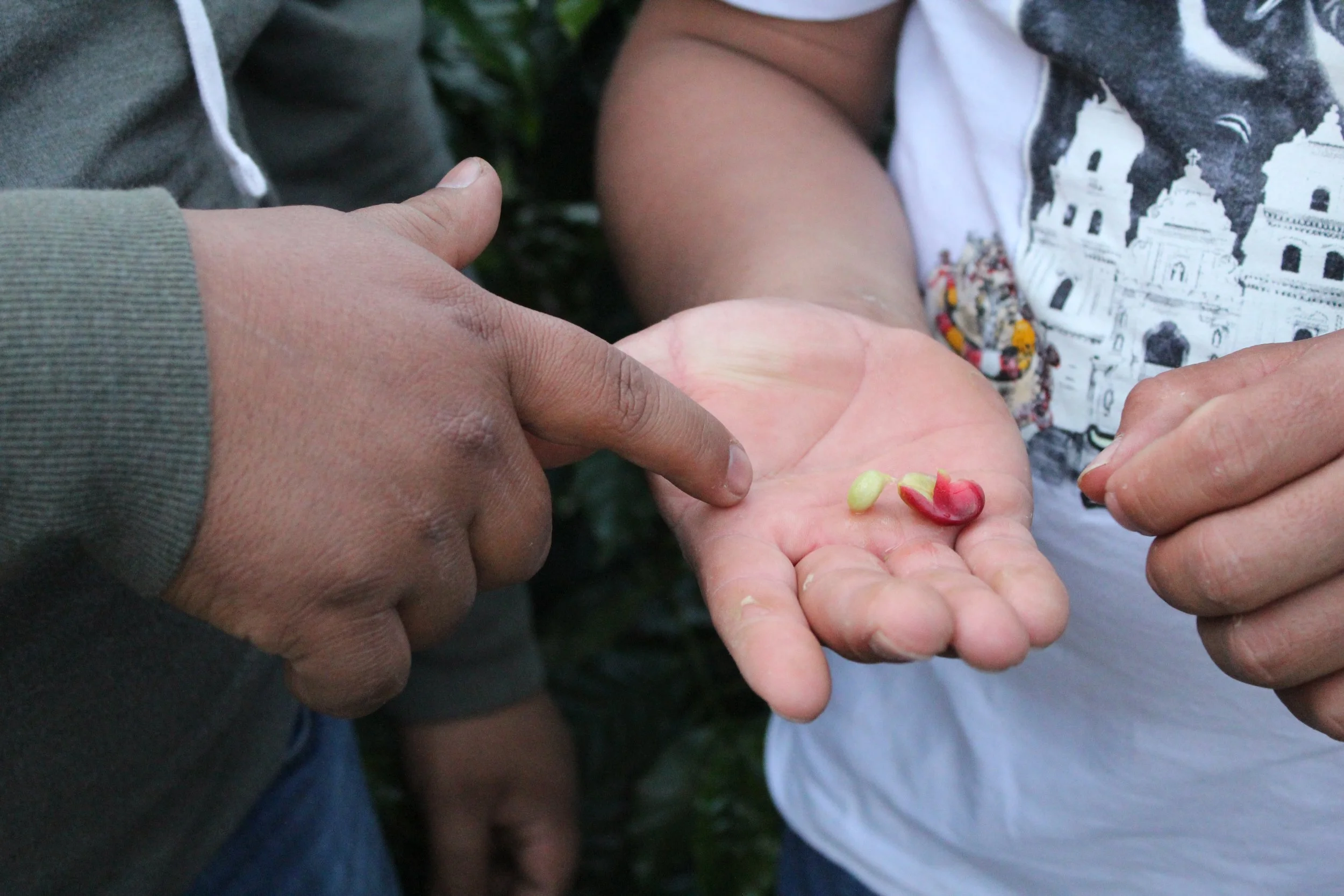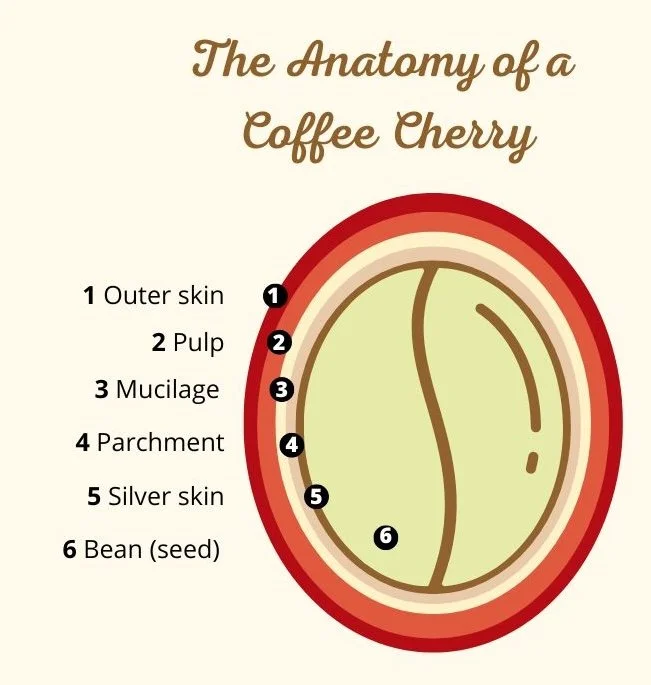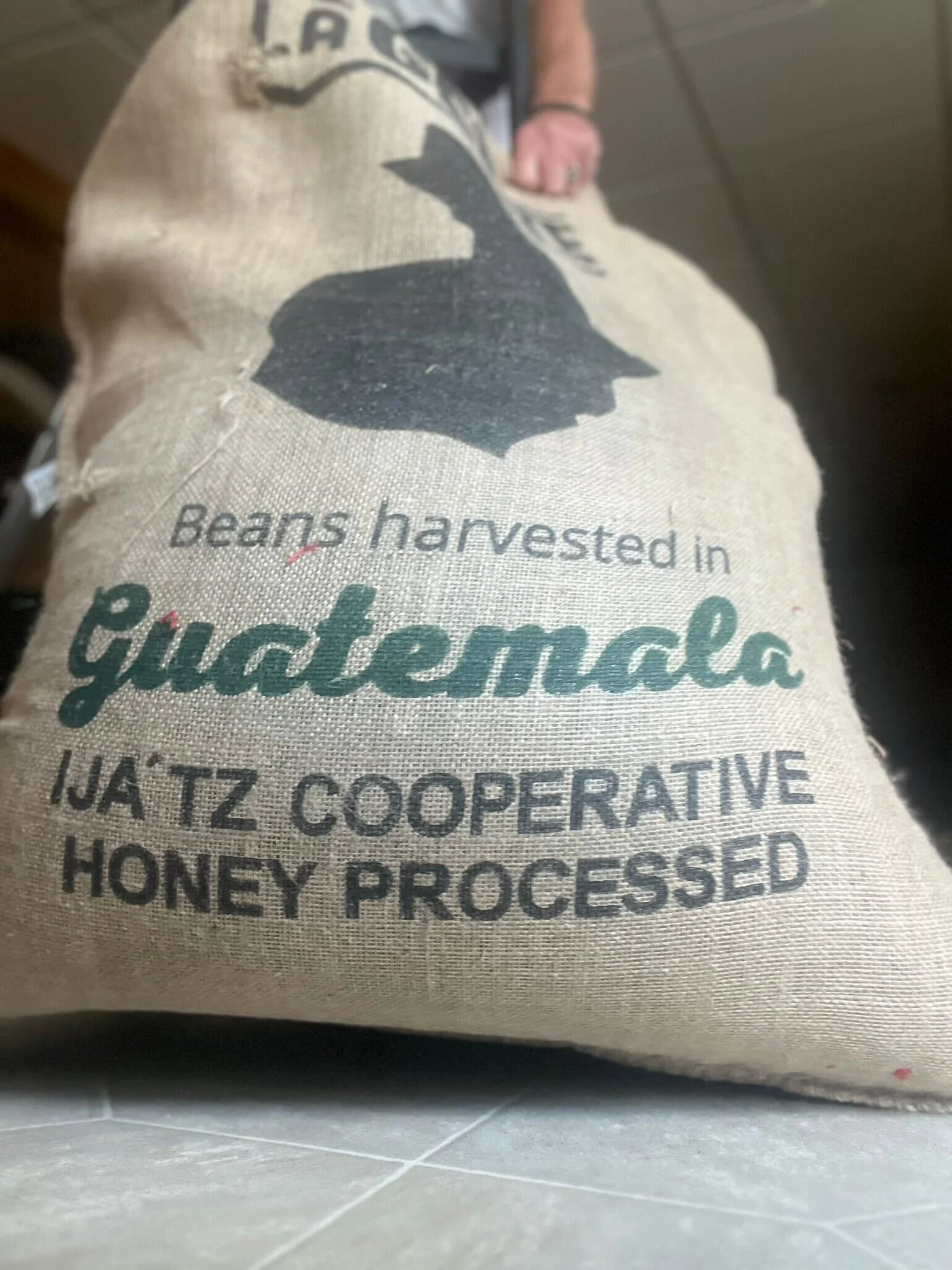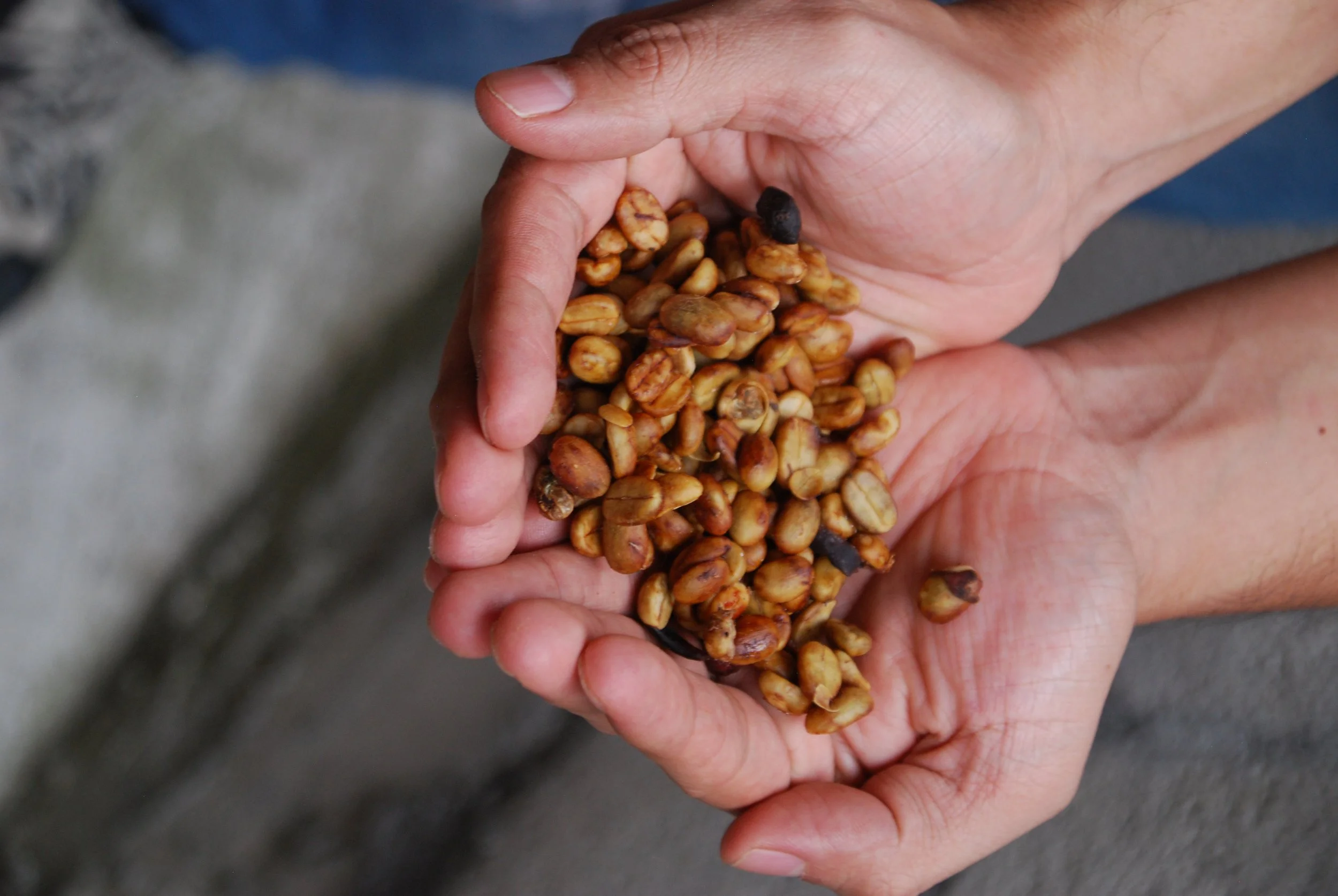Exploring Coffee Flavors of Honey Processed Coffee
by Aliisa Oake
By hearing the word “honey” being associated with a coffee processing method, many people create the assumption that honey is added to the process or that the coffee flavors taste somewhat like honey. Believe it or not, this isn’t true! This coffee processing method gets its name from the sticky feel that the coffee beans have before being dried - almost as if they have honey on them. When the skin of a coffee cherry is removed, a thin layer of mucilage is left on the coffee bean, which is the part that tends to be very sticky.
Honey processed coffee can sometimes be seen as a middle ground between natural and washed coffee processing methods. If you haven’t heard of these coffee processing methods or would like to know more about what they mean, we recommend reading our previous articles about natural processed coffee and washed processed coffee.
A Simple Breakdown of Honey Coffee Processing
Let’s get into more detail about what’s involved in honey processed coffee. After coffee cherries are harvested, the coffee beans are depulped so that the outer skin layer is removed, leaving a thin layer of mucilage on the beans. This mucilage layer contains a high amount of sugar and acids, which are responsible for the richness and sweetness of the final coffee flavor.
Coffee beans are then carefully laid out to dry in the sun, typically on a patio or raised beds. This drying process requires diligent monitoring, especially because the sticky coating causes the beans to be more prone to disruptions like over-fermentation or mold. Depending on the amount of mucilage left on the coffee beans, coffee producers might classify the beans into three different categories.
Honey Proccessed Coffee Categories
Mucilage layers give the beans different colors after they are dried, so categories are referred to as yellow, red, or black honey processed coffee:
A yellow honey coffee typically retains about 25% of the mucilage and is dried under direct sunlight, which speeds up the drying process. As the beans dry, they develop a light yellow hue.
Red honey coffee, with about 50% of the mucilage left on, dries more slowly, often under partial shade to allow for greater flavor development.
Black honey coffee has the highest amount of mucilage remaining, sometimes nearly all of it, making it similar to natural processing, although it’s dried in fully shaded conditions with no direct sunlight. This extended drying period results in a darker color shade and often a deeper, more complex flavor profile.
The category that De La Gente commercializes is yellow honey coffee, which can also be referred to as gold honey coffee.
Flavor Profile of Guatemalan Honey Processed Coffee
Guatemalan honey processed coffees fall in the middle between washed coffees and natural coffees - offering the best of both worlds in terms of flavors. The flavor of a honey process depends on how much of the sticky fruit layer, called mucilage, is left on the bean during the drying. The more mucilage that remains, the stronger and more complex the flavor tends to be. A coffee would be described as “complex” when it has a combination of different flavors and aromas.
This method produces a cup that has both the lively brightness of a washed coffee and the sweet, fruitiness in a natural coffee - overall creating a balance of clear, bright acidity and full-bodied sweetness. The phrase “clear, bright, acidity” refers to crisp flavors that make coffee taste more vibrant and refreshing, along with having flavors that are clean and easier to distinguish. “Full-bodied sweetness” means that the coffee tastes richer, or leaves a denser after-taste feel on the tongue. Basically, honey processed coffees give you a flavorful middle ground that is refreshing but sweet, and clean but rich.
More specific flavors tend to vary depending on the level of fruit layer leftover on the coffee bean. The remaining mucilage adds to the sweetness of the coffee, creating flavors like honey, red fruit, and tropical notes. Additionally, depending on the region of Guatemala that the coffee is grown, the flavor notes might vary slightly due to variations in microclimate, nutrients found in the soil, and the altitude coffee plants are grown.
One of our partner roasters and green coffee buyers, Colin Dempsey from Cultura Spirit, provided insight on some aspects of the honey processed coffee that he purchases from De La Gente and roasts in his coffee shop.
What draws you to purchase and roast honey processed coffees compared to washed or natural coffees?
To me, honey processed coffee is SO unique! It really fascinates me how honey processed coffee completely changes the tasting profile.
What stands out to you about honey processed coffee? What flavor notes are common?
I am most familiar with the honey processed coffee from the Ija’tz Cooperative from San Lucas Tolíman on Lake Atitlan, Guatemala. Their washed process gives tasting notes of chocolate, maple syrup, and caramel, while the honey process gives it bright, fruity notes like strawberry and peach, and even a mint finish - it’s amazing!
Is there a growing demand for honey processed coffee among your customers? If any, what are some confusions that they have about this kind of process?
Yes, there most definitely is! We specialize in Guatemalan coffee and I only source through De La Gente because of the relationship that I have built with them for over a decade. Because of the wide variety of tasting profiles and beans in general provided from all of the DLG coffees, we are able to create amazing, unique roasts.
I love the educational side of coffee and spreading knowledge to all of the clients we meet. In the first place, many people who have not done deeper research into coffee aren’t even aware that different processes exist or how it’s even processed. I think that in general, many people are not aware and I love to explain the differences in processing them!
Popularity of Honey Processed Coffee
Costa Rica was the first country to popularize this coffee processing method, but it has grown throughout other areas of Central America over the years. This has also made the global coffee market more familiarized with the type of coffee flavors this method creates. With any coffee processing method, using the honey processed coffee method is very labor intensive and can sometimes be challenging. Post-harvesting steps during the coffee cultivation process require knowledge, skill, and careful planning, especially if there is an unpredictability level involved in the outcome of a process such as this one.
As popularity and knowledge increased about the coffee industry, specifically details about high-quality, specialty coffee cultivation, a higher value was placed in the steps involved in the process. This increase in desire for new coffee flavors and interest in specialty coffee cultivation made honey processed coffee of higher demand by roasters. Buyers have also begun to acknowledge the intricate steps involved, so producers who use this process are able to obtain a higher price for their green coffee beans.
Although this is good news for coffee producers, they need to be knowledgeable and confident in committing to processing their coffee beans through this method since there is risk involved. They need to make a solid business decision and allocate the required time necessary to care for it more regularly, especially if they choose to use the black honey processing method. This is because the longer the coffee is dried, the more likely it is to over-ferment, be exposed to bacterial infections, and obtain unwanted defects. With this, those who choose to cultivate honey processed coffee need to consider the most marketable product for them before committing to this method.
Sources






